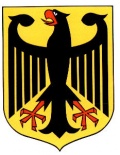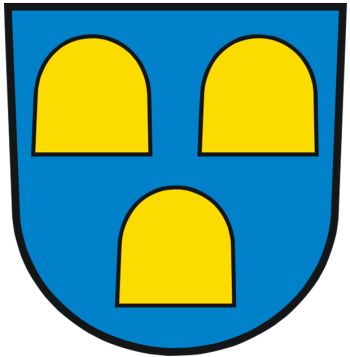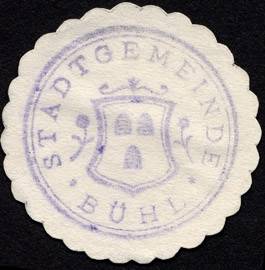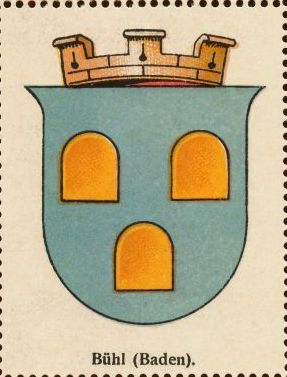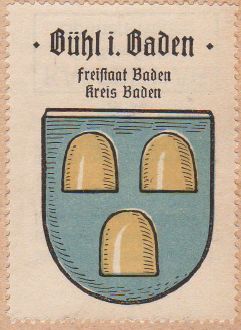Bühl (Baden): Difference between revisions
Knorrepoes (talk | contribs) m (Text replacement - "{{media}}" to " {{de1}} {{media}}") |
Knorrepoes (talk | contribs) m (Text replacement - "{{de1}}↵" to "") |
||
| Line 48: | Line 48: | ||
{{media}} | {{media}} | ||
Revision as of 10:03, 26 December 2022
This page is part of the German heraldry portal Deutsche Wappensammlung |
Heraldry of the World |
|
German heraldry:
|
Selected collector's items from Germany:
|
BÜHL
State : Baden-Württemberg
District (Kreis) : Rastatt (until 1972 Bühl)
Additions : 1934 Kappelwindeck, 1972 Altschweier, Balzhofen, Eisental, Moos, Neusatz (1936 Waldmatt), Oberbruch, Oberweier, Vimbuch, Weitenung
| German |
In Blau drei (2:1) goldene Bühel (Hügel). |
| English | (Baden) No blazon/translation known. Please click here to send your (heraldic !) blazon or translation |
Origin/meaning
Bühl was already a town in the 13th century and the oldest seal dates from the early 15th century. On the oldest seal the canting hills (from Bühel or Hugel, hill) can already be seen.
| The seal from 1409-1507 |
The seal from 1485-1612 |
| The seal from 1621-1630 |
The seal from 1643 |
| The seal from 1681-1779 |
The seal from 1739-1771 |
| The seal from 1805 |
Late 19th century seal |
| The seal from 1900 |
The arms thus never really changed and were finally officially approved in 1900. During the 19th century the hills were sometimes seen as beehives, and shown as such.
| The arms in the Wappen-Sammlung (+/- 1910) |
The arms by Hupp in the Kaffee Hag albums +/- 1925 |
Contact and Support
Partners:
Your logo here ?
Contact us
© since 1995, Heraldry of the World, Ralf Hartemink 
Index of the site
Literature: Stadler, K., 1964-1971; Zier, 1964.
